Education
Building a supportive bridge between EARLY YEARS and PRIMARY SCHOOL
A smooth transition between early years and primary school can only be achieved through a combined effort of all the stakeholders, believes Firdaus F Lalkaka.
Published
6 years agoon
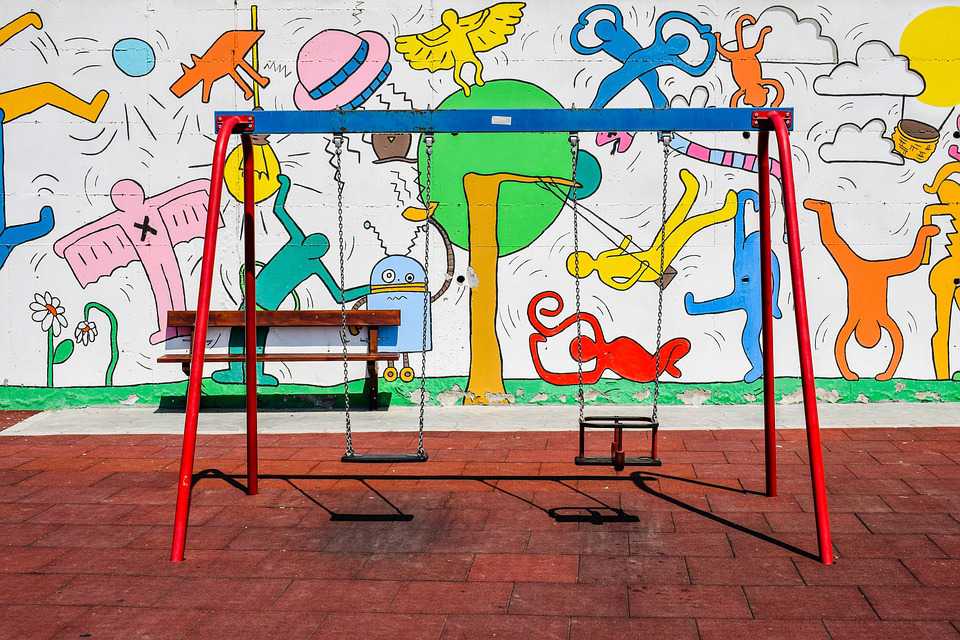
Going to school is an exciting as well as a challenging time for young children and their families. Moving from early childhood education to an elementary school can be a positive and rewarding experience that sets children up for a happy and successful academic pathway. It can also be a period of vulnerability for many children. Effective transitions are critical to the development of children’s self-worth, confidence and resilience, and ongoing success at school. This is a time to build relationships, maintain excitement for learning and ensure children experience continuity in their learning. Ensuring continuity of learning poses quite a challenge while children move through preschool, elementary school and beyond as children are required to become familiar with new people, practices and expectations. Unless the “learning” that the children have achieved during their preschool years seamlessly transfers to and is built on, in the next stage of elementary school, it will get interrupted and cause impediments in their progress and achievement. A smooth transition can only be achieved through a combined effort of all the stakeholders namely, the government (through a robust policy framework), the schools (preschools and elementary schools) and the parents.
In order to better achieve the objective of “inclusion” under RTE for ensuring a smoother transition especially for children coming from disadvantaged families, rather than laying emphasis on preparing the “child to be ready for school,” India would greatly benefit by considering a shift of emphasis to making the “schools ready for a child”.
A. Government Policy: Suggestions
1) The 25% quota of admissions u/s 12(1)(c) of RTE Act should be made applicable beginning from the lowest section of preschool i.e. from nursery onwards instead of from class as is presently being done. For a disadvantaged child to enter schooling from class 1 without a preschool education is as risky as attempting to board a speeding bus – it’s a surefire recipe for FAILURE!
2) Need for a robust monitoring and evaluation system to handhold disadvantaged children who are admitted to an English-medium school to ensure that such children don’t get disillusioned and ultimately drop-out.
3) Need for a “One-Nation-OnePolicy” for ECCE: This involves:-
-Fixation of common “Age-atEntry” norms and a common “cutoff ” date
* (PG @ 2+, Nur @ 3+, Jr.KG @ 4+, Sr.KG @ 5+ & Std-1 @ 6+)
* With the academic year commencing in June, cut-off date should be May 31.
Designing of a developmentally appropriate ECCE and Elementary School Curriculum that is in alignment with the learning milestones to ensure a smooth transition sans any overlaps.
Defining minimum infrastructure specifications for preschools
Defining child safety norms, etc
Defining the maximum number of children per class
Scientifically designed progress reports of children that are focused on capturing the achievement of learning milestones
Leveraging technology to ensure full compliance under RTE and ensure that no child is left behind
Ensuring timely re-imbursement of fees of admissions done under RTE
4) Bearing in mind the recent instances of assault and abuse of preschoolers, it would be in the best interest of children for the government to consider drafting of a policy which makes it mandatory to run a preschool from an exclusive premise rather than from within the premises of a primary/ secondary school.
5) Priority should be given by “neighbourhood” elementary schools while granting admission in class 1 to children enrolled in neighbourhood preschools.
6) To uphold the Right to Equality (guaranteed under the Constitution of India) of all children to secure admission in class 1 regardless of whether they are doing their preschooling in a standalone preschool or a preschool run by a recognised school, the government MUST ensure that admission is granted on either first-come-first-served basis or on draw of lots (as is already approved by the Education dept.).
7) Pressing need for building an evaluation model that promotes children based on achievement of learning outcomes rather than on an examination-based model which encourages rote learning.
8) Isn’t “nation building” everyone’s responsibility?: There is no logical reason why provisions of RTE Act should not be applicable to Minority Institutions for admitting disadvantaged children under the 25% quota. If they believe in the Indian Constitution which confers upon them special rights and privileges, I fail to understand why they are unwilling to shoulder the responsibility of admitting disadvantaged children under RTE and contributing towards nation building.
9) Caught between a rock and a hard place: Rather than accepting their complete failure in discharging their constitutional responsibility of providing quality public education to its citizens and taking concrete steps to improving the quality of public education in government schools, the government is introducing laws to impose restrictions on what fees private schools can charge on one hand and forcing them to admit disadvantaged children to the extent of 25% on the other. If the government is genuinely interested in bringing quality private school education at affordable rates, they should consider giving land for free and loans for school infrastructure at special rates with long moratoriums and/or allow private enterprise to manage the existing government schools and fix a value to their services which is based on the attainment of learning outcomes in children.
B. Preschools and primary schools The ground realities have been beautifully captured in the introductory paragraphs in chapter 1 of the Report of the Committee on Pre-Primary and Pre-School Education in Delhi dated 31- 03-2007 reproduced below:
1.1 Early Childhood Care and Education has globally been recognised as critical for human resource development. The first 8 years of a child’s life are the most crucial years because during this period of early childhood the pace of development is extremely rapid, determining the cognitive and physical growth and laying the foundation for shaping the social and personal habits and values. There is a growing body of research evidence to prove that the synoptic connections in the brain that are critical for the full development of the brain’s potential take place during the early phase of childhood.
1.2 Early Childhood Development includes two main aspects, i.e., care and education. Care is a comprehensive term that includes proper nutrition, medical attention particularly in regard to immunisation, security and safety and emotional support. The ‘education’ component includes pre-school education programmes aimed at 3-6 year-olds and extends to class 1 and 2 to cover children up to the age of 8 under the Early Childhood Care and Education (ECCE). However, it is to be clearly understood that ECCE is an integrated programme that takes into account the synergistic and interdependent relationship between health, nutrition, intellectual, social and emotional development and education, addressing the imperative of holistic and all-round development of the child.
Thus, it can be seen that any discussion on pre-primary education cannot exclude other aspects of early childhood development. On the contrary an examination of issues relating to pre-primary education should necessarily focus on the developmental paradigm so that the cognitive, affective and psychomotor issues are comprehensively addressed in the context of education.
1.3 Changing socio-economic conditions have also thrown up new challenges. The changes in family structure brought about by transition from joint families to nuclear families coupled with the increasing propensity of both parents going to jobs have put greater pressure on Early Childhood Education especially in urban and semi-urban areas. As parents face the compulsion of keeping their children in ‘safe custody’ when they are out on work, they invariably turn to crèches, kindergarten and play schools. Parents are taking their children out of the home environment much earlier than ever before. While sending children to crèches by parents who are both employed with no elders to take care of their children cannot be faulted, the growing tendency on the part of overenthusiastic parents to initiate their children into ‘education’ much before the children are ready for it is a cause of great concern. So, the first question that is to be answered is: What is the suitable age for a child to begin pre-schooling? The other important question is about what is going on in the name of pre-schooling in a majority of schools in Delhi.
1.4 The enormous demand for preschooling facilities has led to a mushrooming of play schools, nursery schools, kindergarten, preparatory schools etc. indicative of a veritable boom in the ‘Alphabet Industry’. A majority of ‘big schools’ (schools which have classes up to 12) run not only nursery and kindergarten or preparatory classes before class I, some of these schools also have pre-nursery. Thus, a child of 2-2½ years of age enters into a system which also has adolescents of 17-18 years of age. Parents’ wish is to put their children early on into such a system so that they need not worry about their children’s future schooling up to class 12. It defies all logic of ‘child-centric’ education. Instead, the prevalent system has become either ‘parent-centric’ or ‘schoolcentric’. It is seen that, barring a few exceptions, these schools are nothing more than mere downward extension of the formal and structured education at the level of class 1 and above. The unrealistic expectations of parents for early stimulation of their children and the inappropriate learning environment offered by schools staffed by either untrained or unsuitably trained teachers have resulted in a confusing and often chaotic situation. To compound the matters further, preschooling by whatever name, does not come under any regulation.
While the provisions of Article 21A and 45 of the Indian Constitution coupled with the provisions in Sec. 3 and 11 of the RTE Act, 2009 have correctly defined the “suitable age” as being 6+ for Class-1 and 3+ for beginning preschooling, despite a specific provision in law, the government is yet to come up with a developmentally appropriate preschool curriculum that doesn’t overlap with the elementary school curriculum! The high expectations of parents coupled with elementary schools interviewing children and rejecting them for failing to have mastered advanced numeracy and writing skills in their preschool years are the two key reasons that are primarily responsible for most preschools (barring a few), succumbing to the pressure and being reduced to nothing more than a mere downward extension of the formal and structured education at the level of class 1 and above and overburdening the child and forcing him to learn and grasp concepts ahead of their time (i.e. before they attain their mental and physical milestones). This completely defeats the purpose!
And, as reiterated earlier, in order to better achieve the objective of “inclusion” under RTE for ensuring a smoother transition especially for children coming from disadvantaged families, India would greatly benefit by considering a shift of emphasis from preparing the “child to be ready for school” to making the “schools ready for a child”. And preparation of scientifically designed reports of each child would go a long way in building the bridge between the preschool and elementary school.
Hence, to ensure a smooth transition, three critical issues need to be dealt with: Defining the suitable age for a child to begin pre-schooling.
Designing of a developmentally appropriate ECCE and Elementary School Curriculum that is in alignment with the learning milestones to ensure a smooth transition sans any overlaps.
Preparation of scientifically designed reports of each child that enable the elementary school teachers hand-hold the child on and from the milestones that he has achieved
C. Parents
In my view, the parents cannot be faulted for having very high expectations from preschools because of the following reasons:
a) Not being experts in early childhood education, parents are clueless about the learning milestones or the learning outcomes expected of a child in his preschool years. Their expectations are primarily built based on what their child is being taught in his preschool as compared to what another preschool is teaching their neighbour’s child. They are also distressed by the fact that if their child hasn’t mastered the advanced numeracy and writing skills as expected by the elementary schools, then their child would fail to secure admission in a reputed school.
b) While on one hand, the government has failed to draft a standardised preschool curriculum, on the other, the elementary schools interview children and reject those who have failed to master advanced numeracy and writing skills! As a result, finding themselves between a rock and a hard place, most preschools not only have to design their own curriculum but have to design it in a manner that meets with the expectations of the elementary schools. As a result, most preschools (barring a few), land up being nothing more than a mere downward extension of the formal and structured education at the level of class 1 and above that force children to learn a curriculum that is age inappropriate and ahead of their time.
Hence, in conclusion, creating a supportive bridge between early years and primary school and beyond is critical to ensure a smooth transition to enable children to continue their progress and achievement uninterruptedly and excel in this journey called life.
The process to ensure smooth transition from preschool to primary school especially to children coming from disadvantaged families admitted under u/s 12(1)(c) of RTE Act
A class 1 primary school teacher who has worked as an ECE teacher is better equipped to bridge the learning experiences from ECE to primary school.
A class 1 primary school teacher can find out about each child’s interests, strengths, culture and capabilities through:
(a) talking with the child’s preschool teacher and parents, (b) referring to the child’s portfolio/journal, (c) ongoing observations and discussions with the child’s parents and (d) formal and informal testing.
Tweaking and tailoring aspects of the primary school curriculum based on the identification of the child’s interests, strengths, culture, capabilities, will greatly help in engaging, challenging and motivating the children
The needs and aspirations of a child with special needs would be better served if there was co-ordination between the preschool teacher and the primary school teacher.
A deeper partnership between the primary teacher and the parents too, would be very supportive.
Having a senior student as “buddy” for every child joining primary school also ensures a smooth transition through companionship in school.
Holding “remedial” classes coupled with regular parent-teacher meetings.
Having a “transitory” class is necessary to bring RTE children up to the mental level of the other children who have done preschool.
You may like
-
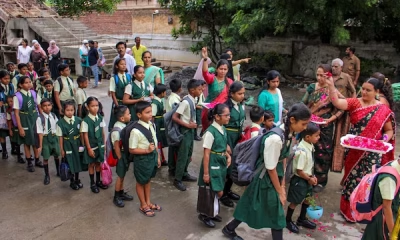

Maharashtra: Over 8,000 Villages Lack Schools, CCTV Compliance Still Patchy
-
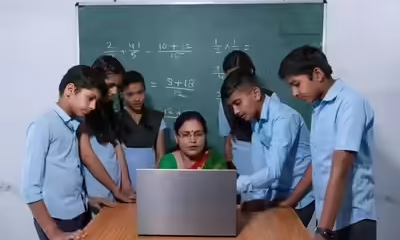

Haryana to Offer Free After-School Coaching for JEE, NDA Aspirants
-
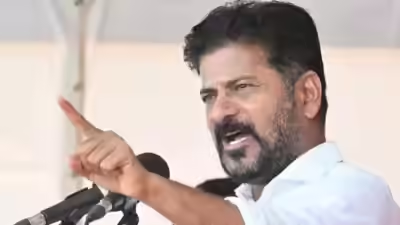

Telangana CM Calls for Overhaul of Intermediate Education in Telangana
-


Indian Astronaut Shubhanshu Shukla to Connect with School Students Live from Space
-


Are 4-Year Degrees Dead? Nikhil Kamath and the WEF Say Lifelong Learning Is Here to Stay
-
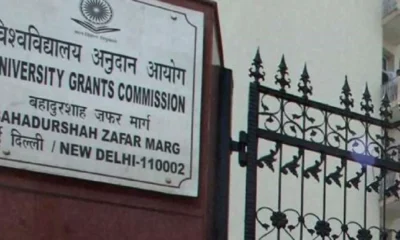

UGC Cracks Down on 89 Institutes Over Anti-Ragging Failures
-


Government Doubles Down on Coaching Centres: New Panel Signals Stronger Regulation Ahead
-
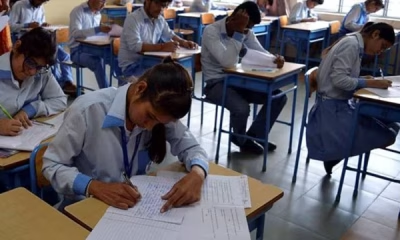

CBSE To Conduct Board Exams Twice for Class 10 from 2026
-


How to Win Back Wandering Minds: Post-Summer Edition
-

Tripura Becomes Third Indian State to Achieve Full Literacy
Education
Maharashtra: Over 8,000 Villages Lack Schools, CCTV Compliance Still Patchy
Published
15 hours agoon
July 3, 2025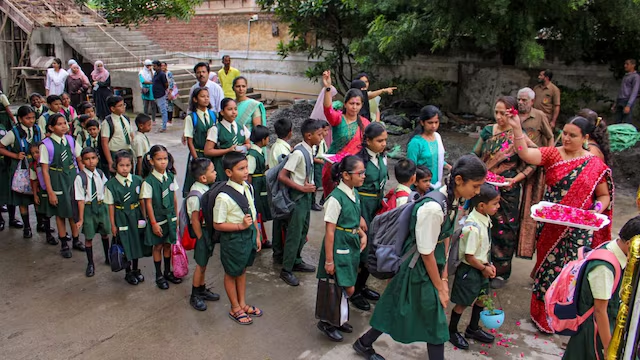
More than 8,600 villages in Maharashtra remain without a single school, according to a recent report by the state’s Women and Child Development Department.
The gap isn’t just in classrooms. Nearly half of all government schools in the state have failed to install CCTV cameras, despite a Bombay High Court directive issued over a year ago mandating the move for student safety.
The numbers come from an internal state government communication that has now surfaced publicly, raising concerns about Maharashtra’s compliance with both the Right to Education (RTE) Act and judicial orders.
While urban education garners attention with smart classrooms and NEP pilot projects, rural Maharashtra still contends with the fundamentals: no schools, no surveillance, and often, no real learning environment.
The CCTV issue, though seemingly minor, ties directly to concerns about student safety and teacher accountability, especially in government-run schools where complaints often go unaddressed. The High Court directive had explicitly asked for CCTV cameras to be installed in all government school premises. Yet, as per the report, only 53% of schools have complied so far.
Educationists and civil society groups have pointed out that the absence of schools in over 8,000 villages violates the RTE Act’s basic requirement of ensuring a primary school within a 1-km radius of every habitation. These gaps disproportionately affect students from marginalized communities who lack access to private schooling options or reliable transportation.
While the state has announced new digital initiatives and curriculum reforms, this data signals the urgent need for parallel investment in basic school infrastructure and safety mechanisms, especially in rural and tribal regions.
If Maharashtra is serious about achieving educational equity, the solution isn’t just in policy blueprints or digital dashboards — it’s in ensuring that every child has a safe, functional school to go to.
Education
Haryana to Offer Free After-School Coaching for JEE, NDA Aspirants
Published
16 hours agoon
July 3, 2025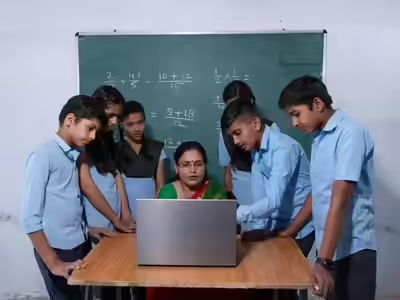
In a push to democratize access to competitive exams, the Haryana government has announced a free after-school coaching initiative for meritorious students in government schools. The scheme will initially roll out in 26 educationally backward blocks, targeting students aspiring to crack entrance exams like JEE (Joint Entrance Examination) and NDA (National Defence Academy).
The move is designed to level the playing field between private and government school students, many of whom lack access to the coaching ecosystem often necessary for success in high-stakes exams.
According to the Education Department, only those students who score above 60% in Class 10 and rank among the top 500 in state-level merit lists will be eligible for the coaching. The classes will be held in selected schools after regular hours.
Officials said that around 100 government school teachers have been identified to undergo training from expert faculty members from IITs and coaching institutions, ensuring quality instruction that mirrors national standards.
The initiative will be implemented in partnership with the national not-for-profit organization, the Rashtriya Avishkar Abhiyan, and aims to align with the broader goals of the NEP 2020 by enabling access, equity, and excellence in education.
By empowering students with structured coaching support—often inaccessible due to financial or geographic barriers—the Haryana government signals its intent to redefine what government schooling can offer in a competitive academic landscape.
Education
Telangana CM Calls for Overhaul of Intermediate Education in Telangana
Published
19 hours agoon
July 3, 2025
In a review meeting held at the Command Control Centre, Telangana Chief Minister A Revanth Reddy instructed education officials to take urgent steps to ensure students who complete Class 10 successfully transition into and complete their Intermediate education.
This directive stems from a persistent gap: while many students clear the Class 10 SSC board exam, a sizable number fail to complete the next academic stage. The CM has asked for a detailed study of the education policy for Classes 9 to 12 to identify where the system is failing and how it can be made more responsive to students’ needs.
Reddy emphasized that Intermediate education is a crucial link in helping students build careers and that adequate career guidance must begin at the college level. He directed officials to work on specific interventions to improve pass percentages in the intermediate board exams.
The review also touched on infrastructure: from proposing that every school fly a national flag to demanding regular updates on the construction progress of Young India Residential Schools. The CM expressed concern over the slow pace of infrastructure projects and instructed officials to accelerate tender processes, especially for the Veeranari Chakali Ilamma Mahila Vishwa Vidyalayam (Women’s University) expansion.
Funding was another key focus, with Revanth asking departments to coordinate with the Centre to ensure that Telangana receives its full share under centrally sponsored schemes.
The policy emphasis is clear: a push for a seamless Class 10 to Intermediate pipeline, improved exam outcomes, stronger infrastructure, and better career preparation for young learners.
Education
Indian Astronaut Shubhanshu Shukla to Connect with School Students Live from Space
Published
3 days agoon
July 1, 2025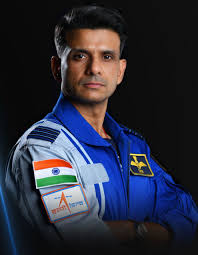
Indian astronaut Shubhanshu Shukla, currently on a 14-day scientific expedition aboard the International Space Station (ISS) as part of the Axiom-4 mission, is scheduled to interact with school students and ISRO engineers on July 4.
The communication will take place via ham radio, through a telebridge set up at the U R Rao Satellite Centre (URSC) in Bengaluru. The session is facilitated by the Amateur Radio on the International Space Station (ARISS) programme, which enables students to engage with astronauts in orbit.
The interaction is scheduled for 3:47 PM IST and will offer participating students an opportunity to ask questions directly to Shukla, who is joined on the mission by three other astronauts.
Shukla has been conducting various scientific experiments during his stay aboard the ISS. These include deploying and imaging space microalgae samples, which are being studied as a potential food source for long-duration missions. He has also participated in the Neuro Motion VR project — involving brain activity tracking through VR tasks in microgravity — and contributed to the Telemetric Health AI study, which uses biometric data and analytics to study cardiovascular and balance changes during spaceflight.
The Axiom-4 mission, organized by Axiom Space, focuses on scientific research in space with potential applications in both space exploration and Earth-based health systems.
Education
UGC Cracks Down on 89 Institutes Over Anti-Ragging Failures
Published
4 days agoon
June 30, 2025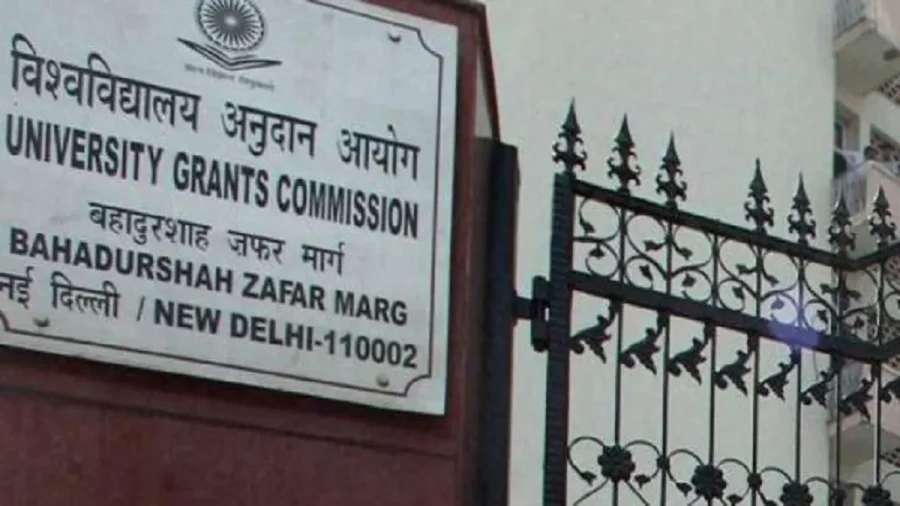
In a firm push for accountability, the University Grants Commission (UGC) has issued show-cause notices to 89 higher education institutions for failing to comply with mandatory anti-ragging regulations. The defaulters include some of India’s most prestigious institutions—17 of which are Institutes of National Importance—including IIT Bombay, IIT Kharagpur, IIT Hyderabad, and IIM Bangalore.
These institutions, despite repeated advisories, failed to submit the required anti-ragging undertakings from students and institutional compliance reports. The lapses have been termed a “significant violation of regulatory norms” by the UGC, raising serious concerns over student safety and campus climate in India’s top educational spaces.
A notice dated June 9, signed by UGC Secretary Prof. Manish R Joshi, has directed all 89 institutions to respond within 30 days by submitting comprehensive compliance reports, securing online anti-ragging affidavits from all students, and detailing both current and planned anti-ragging mechanisms.
If the institutions fail to act within the deadline, consequences may include withdrawal of UGC grants, public disclosure of non-compliance status, and potential derecognition or withdrawal of affiliation.
Among the list of defaulters are the Indian Statistical Institute, Kolkata, AIIMS Raebareli, Aligarh Muslim University, RGIPT Basar, and several National Institutes of Design. The issue becomes even more urgent in light of recent ragging-related incidents and an increasing perception of campus hostility. “Institutions must treat this as a matter of utmost urgency. Your prompt compliance will be essential in upholding institutional responsibility towards student welfare,” reads the UGC’s statement.
Ragging has no place in modern education, especially not in a country positioning itself as a global knowledge leader.
In 2025, with India’s education sector expanding in reach, recognition, and responsibility, compliance with anti-ragging norms shouldn’t require reminders. It should be a given.
As the world watches Indian institutions climb global rankings, student safety and well-being must remain central, not as compliance checkboxes, but as part of the educational culture we aspire to build.
Education
Government Doubles Down on Coaching Centres: New Panel Signals Stronger Regulation Ahead
Published
1 week agoon
June 26, 2025
In a decisive step toward reforming India’s fragmented senior secondary education system, the Ministry of Education has constituted an 11-member high-level committee to address the mushrooming of dummy schools and the unchecked influence of coaching centres. Chaired by Higher Education Secretary Vineet Joshi, the committee includes representatives from CBSE, NCERT, and faculty from IITs in Madras, Kanpur, and Trichy.
The move is seen as part of a growing policy consensus across central and state governments to reclaim the authority of schools, following recent crackdowns and reforms aimed at regulating coaching institutions and curbing the dummy school culture that sidelines holistic education.
Dummy schools — where students are officially enrolled but rarely attend — have emerged as a by-product of India’s competitive entrance exam culture. These institutions prioritise JEE, NEET, and CUET preparation through coaching classes, while students disengage from formal schooling. The CBSE’s March 2025 advisory warning that students from dummy schools could be barred from board exams marked a serious turning point in policy enforcement.
Earlier this year, the Delhi Government carried out inspections in over 600 private schools, issuing notices to at least 10 for running dummy setups. The move followed media reports and parental complaints about students being denied regular schooling in favour of coaching arrangements.
Meanwhile, the Rajasthan Cabinet approved a bill in April 2025 to regulate coaching centres operating in Kota and other education hubs. The legislation aims to curb exploitative practices, mandate mental health counsellors, and prevent coaching centres from operating without a minimum infrastructure standard—prompted by rising student suicides in the state.
Central Framework and Industry Oversight
In February 2025, the Central Government announced a new framework for coaching centres, proposing registration, transparency in fee structures, and guidelines on advertising to prevent misleading claims. Together with the current committee’s formation, these reforms indicate a systematic tightening of oversight at all levels.
The new panel’s mandate is broad. It will investigate:
- The socio-academic reasons behind the rise of dummy schools
- The misalignment between school curricula and competitive exams
- The impact of coaching on student well-being and critical thinking
- The need to promote alternate career pathways beyond engineering and medicine
- Regulations around coaching advertisements and contract practices
A National Rethink on the Purpose of Schooling
Education experts like Dr Ameeta Mulla Wattal have welcomed the initiative, calling it “a vital opportunity to restore the sanctity of school education.” The rise of coaching centres as parallel systems, she noted, has come at the cost of creativity, values, and even mental health in adolescents.
As India contemplates the future of its learners, the Ministry’s recent actions suggest a serious intent to bridge the gap between boardrooms and classrooms. Whether the new committee’s recommendations lead to tangible change remains to be seen, but the signals are clear: education in India must prepare children for life, not just for an entrance exam.
Education
CBSE To Conduct Board Exams Twice for Class 10 from 2026
Published
1 week agoon
June 26, 2025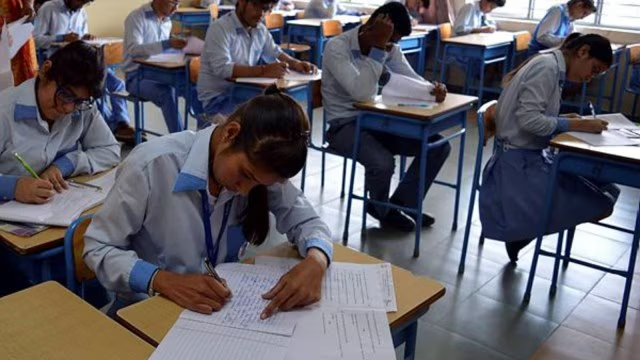
In a move aimed at reducing academic pressure and offering students a second shot within the same academic year, the Central Board of Secondary Education (CBSE) has announced a revised board examination structure for Class 10. Starting from the 2025–26 session, students will appear for two board exams: the first in February and the second in May.
While the February exam will be the ‘main’ board, students who wish to improve their scores in up to three subjects can take the second board exam. Those who fail in one or two subjects may also attempt the May exam under the compartment category. However, those who miss three or more subjects will be marked ‘Essential Repeat’ and have to retake the exam the following year.
Importantly, this is not a semester system. Students must appear for the first exam. The second is optional—meant only for improvement or compartment cases. No additional or new subjects can be added between the two exams.
CBSE has clarified that the structure, syllabus, and pattern of questions will remain unchanged. The results of the first exam will be declared in April, enabling provisional Class 11 admissions. However, the final marksheets and certificates will be issued only after the second exam results are announced in June.
This dual-exam model was opened for public feedback earlier this year and will initially apply only to Class 10. A similar system for Class 12 is being considered but has not yet been confirmed.
For schools, this change will require rethinking academic calendars, counselling processes, and internal assessments, especially for students who may be at risk of needing a second attempt. The move aligns with CBSE’s broader goals of offering students more flexibility and reducing the high stakes of a single board exam.
Education
How to Win Back Wandering Minds: Post-Summer Edition
Published
1 week agoon
June 24, 2025By
Renu Sharma
The dopamine-rich scrolling in late mornings with amorphous freedom has made our zealous students so comfortable that they are re-entering their classrooms with minds tuned to instant gratification, not delayed rewards. Now the challenge isn’t just academics but to re-engage our bud’s attention and curiosity. Neuroscience backed motivation strategies and intentional school design could prove to be a catalyst as it will bring a positive change and enable the students to learn at a better pace.
1. Rewiring the Dopamine rush with 2 Ps, Purpose and Productivity:
Neuroscience says: Where our brains are functional to seek novelty and purpose on their own, during summer break, the buds often lean into adding the activities to their routine which are unpredictable, quick, and rewarding referring back to instant gratification, these activities may include social media, gaming, and chatting anonymously and grateful to internet and inventions, there are plethora of platforms enabling students to be distracted. And then joining back the school with a gradual drip of delayed academic rewards may seem to be a let-down for students.
Actionable tip: We as facilitators have to be the mystery-solvers channeling their energy into productivity, enlightening them with real-world challenges, interdisciplinary projects, or a mystery to solve that taps into their intrinsic curiosity. Novelty may allow us to reset their attention-even primitive changes in surrounding like rearranged desks, learning outdoors, and using the BALA method to utilize infrastructure, can signal a shift in engagement and productivity.
2. Design for Autonomy and Flow
Neuroscience says:
Neuroscience tells us that motivation really flourishes when students feel they have some control over their learning. The brain’s reward system kicks in when choices are part of the equation, especially regarding how tasks are structured or what content is covered.
Here’s a practical tip: give students structured choices, like deciding which book to dive into, which problem to tackle first, or how they want to present their findings. A design that promotes flow—complete with clear goals, manageable challenges, and instant feedback—helps keep students in that ideal zone, avoiding both boredom and anxiety.
3. Rebuild Social Motivation Through Spaces That Connect
Neuroscience tells us that connecting with peers is a huge motivator, especially after the pandemic. Our brains are wired for social interaction, which plays a key role in how we learn and engage emotionally.
Actionable tip: Create flexible seating arrangements or common areas that encourage group work and casual collaboration. Try incorporating daily activities like “curiosity circles” or peer-led problem-solving sessions to foster a sense of belonging and shared learning objectives.
4. Leverage Routines to Rewire Attention
Neuroscience shows that our habits influence our attention. After a summer of scattered focus, students thrive on rhythmic and consistent routines that help retrain their executive functions.
Actionable tip: Kick off classes with familiar “mind-on” rituals — whether it’s a thought-provoking question, a brief reflection, or a quiet sketch — to help anchor their attention. Consistency breeds comfort, and that comfort boosts confidence.
5. Make Joy a Design Priority
Neuroscience indicates that positive emotions can enhance learning by boosting neuroplasticity. When students (and teachers) experience joy, they’re more likely to engage deeply and retain what they learn.
Actionable tip: Infuse joyful moments into the day — through fun challenges, movement breaks, or a bit of humor. Allow time for students to share what excites them. A joyful classroom isn’t just a nicer place to be; it’s also more effective for learning.
Conclusion: To capture wandering minds, we need to understand how motivation truly works and design both our curriculum and learning spaces to support it. When we ignite curiosity, honor autonomy, and weave joy into the experience, even the sleepiest summer brain can come alive again.
This article is written by:
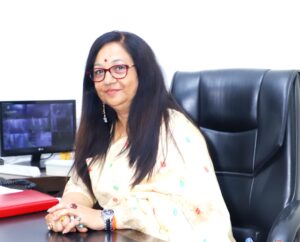
Renu Sharma
Assistant Director – Systems – Indirapuram Group of Schools
Principal – Indirapuram Public School – Crossings Republik
Education
Tripura Becomes Third Indian State to Achieve Full Literacy
Published
1 week agoon
June 24, 2025
Tripura has been declared a fully literate state, becoming the third in the country to cross the 95% literacy threshold after Goa and Mizoram.
The announcement was made by Chief Minister Dr. Manik Saha, citing data from the Understanding Lifelong Learning for All in Society (ULLAS) programme — a flagship literacy and life skills initiative aligned with the National Education Policy (NEP) 2020. The declaration marks not just an administrative achievement, but a generational leap in educational access and community participation.
Tripura’s current literacy rate stands at 95.6%, as per the latest Periodic Labour Force Survey, a remarkable rise from 87.22% in the 2011 Census, and a far cry from 20.24% in 1961.
“This is a historic moment for Tripura. From a 20% literacy rate six decades ago to 95.6% today, we have rewritten our narrative,” said Dr. Saha in a public post. “Through the successful implementation of ULLAS, we have ensured that literacy is not limited to signing one’s name, but includes the confidence to participate meaningfully in society.”
ULLAS, launched under the New India Literacy Programme, targets adult learners aged 15 and above who have missed out on formal schooling. It goes beyond basic literacy to include numeracy, digital and financial literacy, legal awareness, and other essential life skills — all aligned with NEP 2020’s commitment to equitable lifelong learning.
The shift from traditional signature-based literacy drives to functional literacy has allowed Tripura to reach new learners with practical, future-ready tools. The model also offers a compelling template for other states striving to raise literacy rates beyond conventional benchmarks.
Education
Assam Brings Sign Language to Senior Secondary Classrooms in Landmark Move
Published
1 week agoon
June 24, 2025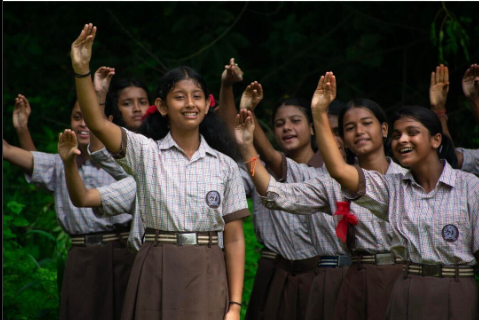
The Assam State School Education Board (ASSEB) has announced the introduction of Sign Language as an elective subject for Higher Secondary (Classes XI–XII) from the current academic year.
Education Minister Dr. Ranoj Pegu made the announcement during the inauguration of a residential AI training programme for teachers at IIT Guwahati. While Artificial Intelligence and Financial Literacy were also introduced as new electives, Sign Language stood out as a critical stride towards making classrooms more accessible to the deaf and hard-of-hearing community.
“This is not just about a subject; it’s about acknowledging communication rights,” said Dr. Pegu, who also unveiled a specially designed AI textbook at the event. The textbook was developed in collaboration with experts from IIT Guwahati and Dibrugarh University. He added that the curriculum reforms are aligned with the National Education Policy (NEP) 2020’s vision of equity, inclusion, and skill readiness.
According to education officials, the rollout of Sign Language will begin in institutions where qualified educators or resource personnel are available. Training for teachers is expected to be scaled up across the coming months. The subject aims to raise awareness about Indian Sign Language (ISL), improve communication access for students with hearing impairments, and sensitise peers to inclusive practices from a young age.
Later in the day, Dr. Pegu chaired a review meeting with officials from the Department of School Education to discuss budget allocations and planning for the 2025–26 academic year. While schemes like the Chief Minister’s Nijut Moina initiative, distribution of bicycles for Class IX girls, and the upgradation of Bodo-medium schools were discussed, the emphasis remained on delivering structural reforms that bridge equity gaps in access and opportunity.
The addition of Sign Language, AI, and Financial Literacy as electives reflects a broader shift in how Assam is reimagining school education — one where life skills, digital literacy, and inclusive values are no longer optional, but integral.
Newsletter

Maharashtra: Over 8,000 Villages Lack Schools, CCTV Compliance Still Patchy

Haryana to Offer Free After-School Coaching for JEE, NDA Aspirants

Telangana CM Calls for Overhaul of Intermediate Education in Telangana

Indian Astronaut Shubhanshu Shukla to Connect with School Students Live from Space

Are 4-Year Degrees Dead? Nikhil Kamath and the WEF Say Lifelong Learning Is Here to Stay

UGC Cracks Down on 89 Institutes Over Anti-Ragging Failures

Government Doubles Down on Coaching Centres: New Panel Signals Stronger Regulation Ahead

CBSE To Conduct Board Exams Twice for Class 10 from 2026

How to Win Back Wandering Minds: Post-Summer Edition
Tripura Becomes Third Indian State to Achieve Full Literacy

Assam Brings Sign Language to Senior Secondary Classrooms in Landmark Move

Delhi Schools to Implement Age 6 Rule for Class 1 Admissions from 2026

Tripura Adds Sex Education & HIV Awareness to Their Curriculum

Four Indian Schools Shine on the Global Stage at World’s Best School Prizes 2024

Centre Urges 7 States to Consider Common Board Amid Alarming Student Failure Rates

IIT Delhi Leads India in the QS Rankings 2026; MIT Tops Globally

Chandigarh, Punjab Lead in School Education Rankings; Meghalaya Trails Behind

Maharashtra Revises Policy on Third Language in Schools, Hindi No Longer Mandatory

From Academics to Empathy: Redefining Academic Success

India Sends 20 Students to Japan Under Sakura Science Programme 2025

Delhi Schools to Observe June as Anti-Malaria Month, Says DoE

Telangana Govt Ties Up With 6 NGOs to Revolutionise Teaching in Govt Schools

History, Identity, and Pride: Books That Make Sense of Being You

Delhi Government Clears Ordinance to Regulate Private School Fees After Protests

Of Formulas and Frames: Why India Must Stop Dividing Science and Art

Is Your School Following These Mandatory CBSE Committees?

CBSE’s ‘Sugar Boards’ Initiative: Tackling the Sweet Crisis in Indian Schools

“Be the Change in a Changing World”: Anita Karwal and Anju Chazot Reflect on NEP 2020
CBSE Warns Dummy School Students May Be Barred from Board Exams

Maharashtra to Regulate Pre-Primary Education with New Law Aligned to NEP 2020

MAHAJYOTI’s Book Distribution Scheme to Empower 7,000 OBC Students Preparing for JEE/NEET & MHT-CET

China Embarks on Ambitious AI-Driven Education Reform to Build a ‘Strong Education Nation’ by 2035

John King’s Book ‘Teacher By Teacher’: A Global Tribute to the Transformative Power of Education

‘Baalpan ki Kavita’ Initiative Launched to Restore Indian Rhymes for Young Learners

CBSE Introduces Mandatory Bridge Course for Classes 6 to 12 in Chhattisgarh Under NEP 2020

Rewriting Ambedkar: Why Students Must Know the Man Beyond the Constitution

CBSE Mandates 50-Hour Annual Training for Teachers, Declares STEM as 2025 Theme

India Bids Farewell to NEP Architect Dr K. Kasturirangan

Pradhan Mantri Rashtriya Bal Puraskar 2025: Nominations Now Open for India’s Young Achievers

Banu Mushtaq’s International Booker Win Is a Wake-Up Call for Indian Schools to Reclaim Literature

NCERT Class 7 Textbooks Updated: Mughals Removed, Focus on Indian Ethos and Pilgrimage

Delhi Government Cracks Down on Dummy Schooling; Over 600 Schools Inspected, 10 Issued Notices

Delhi Approves Landmark Bill to Regulate School Fees Across 1,677 Institutions

The Ethics of AI Art in Education & Nostalgia: The Ghibli Effect

Operation Sindoor and Operation Abhyaas: Navigating School Safety and Student Well-being Amid Rising Tensions
CBSE Revises Class 10, 12 Curriculum: Biannual Exams, New Subjects and Flexible Passing Criteria Introduced

Harvard Stands Its Ground: Harvard Faces ₹18,400 Crore Funding Freeze After Rejecting Trump Administration’s Demands

CUET-UG 2025 Likely to be Postponed, Fresh Dates Expected Soon

Aalamaram 2025: Where Indian Educators Came Together to Grow, Reflect, and Lead

Trump Signs Executive Order to Promote AI Integration in U.S. K-12 Education
SGEF2023 | Special Address by Rama Datt, Trustee, Maharaja Sawai Man Singh II Trust, Jaipur

ScooNews | After Movie | ScooNews Global Educators Fest 2023

Aftermovie | NIES2 UP Chapter | 21 Jan 2023

WEBINAR | Gamification in Education: How Digital Badges Can Boost Student Motivation and Engagement

ScooNews | WEBINAR| Importance of Physical Activity for Children at School | Plaeto

SCOONEWS | WEBINAR | WHY DIGITIZING YOUR SCHOOL IS A MUST | TEACHMINT

Keynote Address | Lakshyaraj Singh Mewar

Anurag Tripathi, Secretary, CBSE at SGEF2022

How schools can nurture every student’s genius

Aftermovie | SGEF2022 | Jaipur

Li Andersson | Minister of Education | Finland

Anurag Tripathi, Secretary, Central Board of Secondary Education (CBSE) discusses NEP2020

ScooNews | Early Ed Asia 2019 | Aftermovie
#PodarECEconf : Pursuing quality ECE

#CBSE Class XII #Results #Highlights

The interesting story of India’s educational system | Adhitya Iyer

A young scientist’s quest for clean water

The Danger of Silence: Clint Smith

National Digital Library of India is an initiative by HRD Ministry

Remembering Kalpana Chawla on her birthday!

Message from Sadhguru for Students!
Message from Sadhguru for Students!

The Untapped Genius That Could Change Science for the Better

Eddy Zhong: How school makes kids less intelligent TEDxYouth@Beacon

#TEDxCanberra : What if every child had access to music education…
Trending
-

 Education3 months ago
Education3 months agoIs Your School Following These Mandatory CBSE Committees?
-
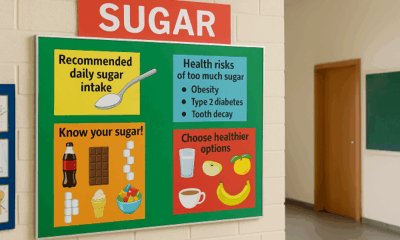
 Education2 months ago
Education2 months agoCBSE’s ‘Sugar Boards’ Initiative: Tackling the Sweet Crisis in Indian Schools
-
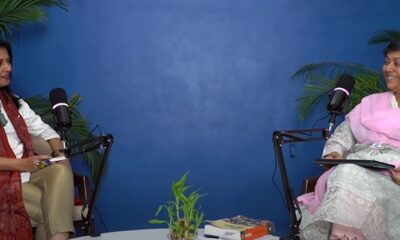
 Education3 months ago
Education3 months ago“Be the Change in a Changing World”: Anita Karwal and Anju Chazot Reflect on NEP 2020
-
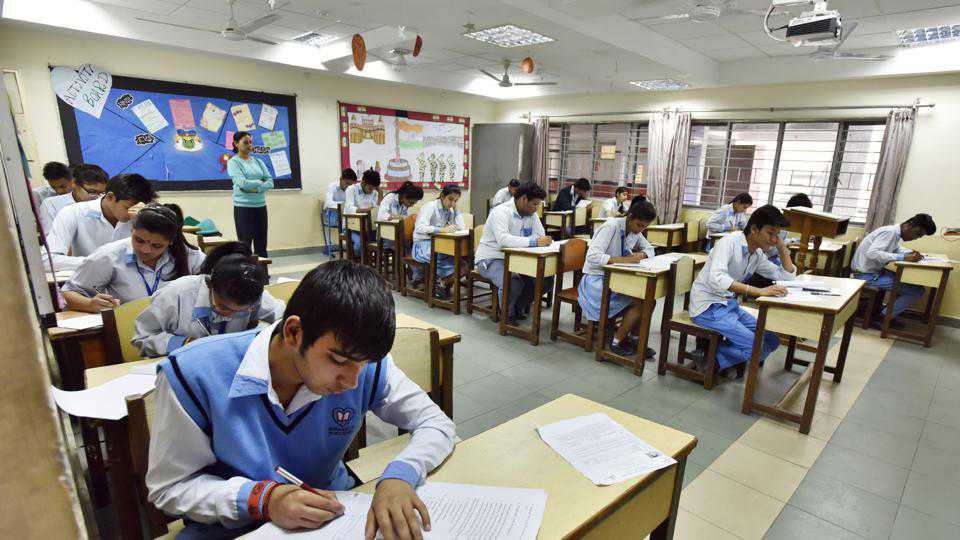
 News3 months ago
News3 months agoCBSE Warns Dummy School Students May Be Barred from Board Exams
-
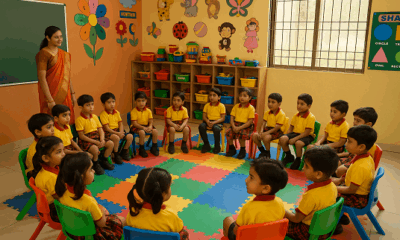
 Education2 months ago
Education2 months agoMaharashtra to Regulate Pre-Primary Education with New Law Aligned to NEP 2020
-
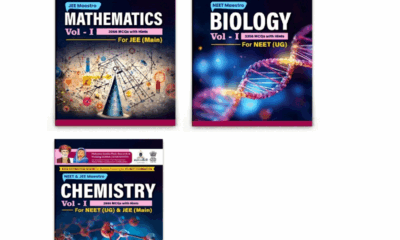
 Education3 months ago
Education3 months agoMAHAJYOTI’s Book Distribution Scheme to Empower 7,000 OBC Students Preparing for JEE/NEET & MHT-CET
-

 Education3 months ago
Education3 months agoChina Embarks on Ambitious AI-Driven Education Reform to Build a ‘Strong Education Nation’ by 2035
-

 Education2 months ago
Education2 months agoJohn King’s Book ‘Teacher By Teacher’: A Global Tribute to the Transformative Power of Education
-

 Education3 months ago
Education3 months ago‘Baalpan ki Kavita’ Initiative Launched to Restore Indian Rhymes for Young Learners
-

 Education2 months ago
Education2 months agoCBSE Introduces Mandatory Bridge Course for Classes 6 to 12 in Chhattisgarh Under NEP 2020





